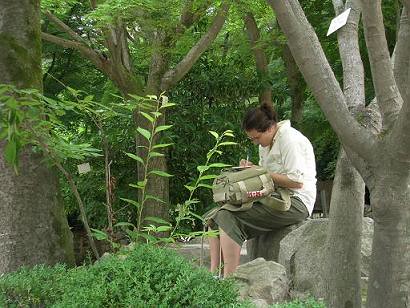Ethiopia is a country of contrasts. Some of the best infrastructure I have seen in a developing country, but more beggars than I have ever seen. Some of the best food I have ever eaten, but the sickest I have ever been. There is a great amount of sun, but because of the elevation it is alarmingly cold.
The women are beautiful, but because the population is overwhelmingly Muslim or Christian Orthodox, they are usually covered from head to foot. The Muslim women usually wear dark colours and the Orthodox the traditional white shawls, with colourful trims. The trims are worn always from the face, unless in mourning when they are worn around the face and neck. When you do get a peak at them, either under the covering or in the privacy of their homes, the women have beautiful hair braids. Unlike in Uganda where the hair is course and unable to be braided with out additions being added, many Ethiopian women have their hair braided into beautiful patterns.
In Uganda there are potholes and buildings occasionally collapse – actually one just the other day – but I have never been asked for money for getting directions or when getting on a taxi. In Ethiopia there are buildings made almost entirely of glass, and I don’t think I saw a pothole in the entire city, with the exception of where the road crews were working, but there is poverty. People sleep on the streets and hands are outstretched all the time. Walking down the street, getting into a taxi, and children who see your car pass all ask for one birr (about $0.10 CAN). It is so ingrained in the culture that children (even those who are not impoverished) greet you with outstretched hands and the request “pay.”
Ethiopian food is based around injera a type of fermented pancake made with tef, a type of grain specific to Ethiopia. Injera is a great source of required vitamins and minerals and is served with any combination of toppings, from spicy chicken (Doro Wat), to yellow lentils and spinach (fasting food), to hot chickpeas (shiro), to fried meat (tibbs). To eat the sauces are scooped up with the injera and popped into the mouth without the fingers touching the tongue or lips. It’s a great way to eat, and all dishes are communal. However, I ran into one small glitch – kitfo. This dish is minced (or ground) meat with spices and Ethiopian butter mixed in. That’s it. It is served raw, and cold, and well made me sick for a good three days. But after I recovered I was back to eating everything cooked again. Doro Wat is my favourite but hard to find on a daily basis – because chicken is so expensive it is usually reserved for special occasions.






No comments:
Post a Comment